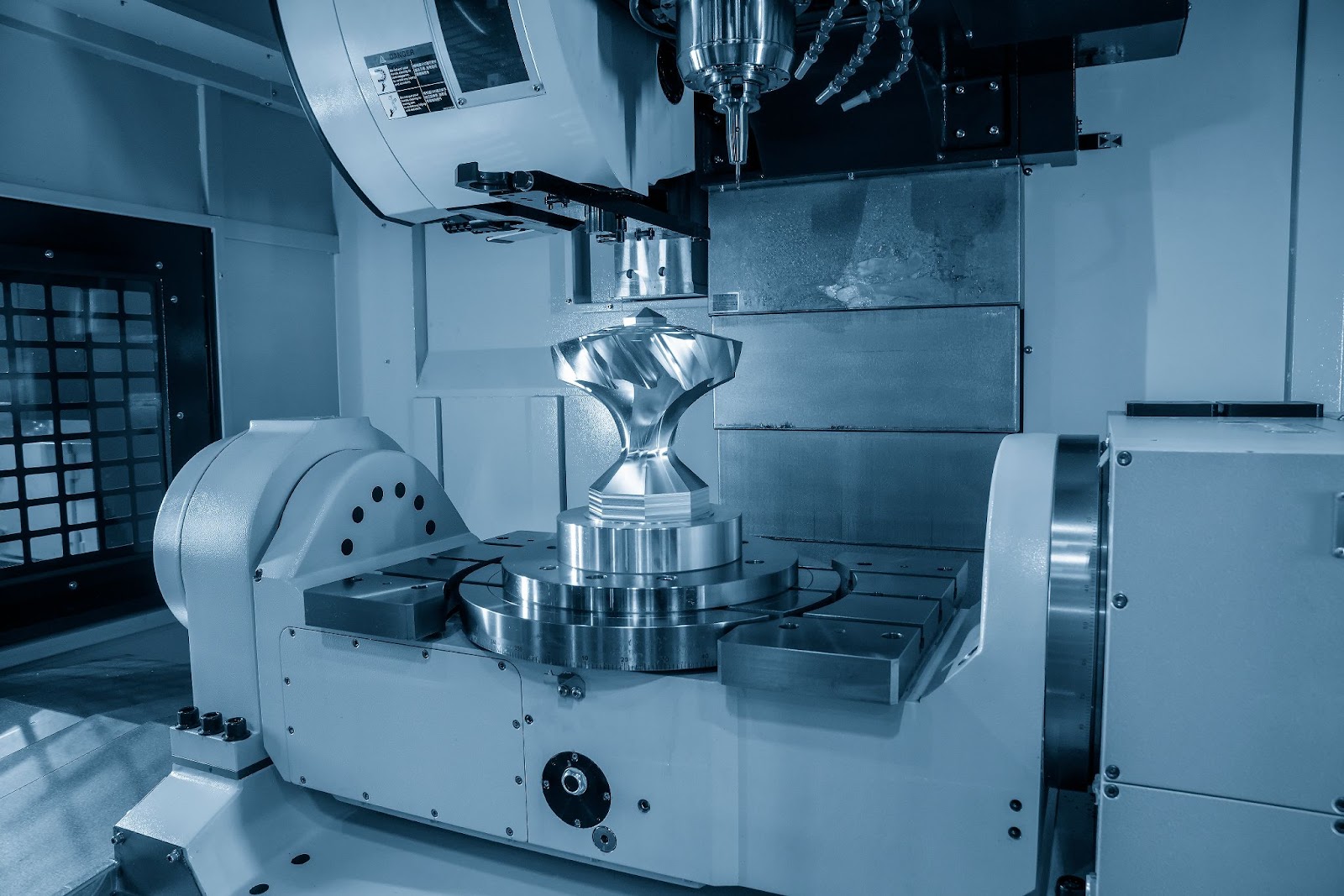Investing in a 5 Axis CNC machine is a significant step toward enhancing your manufacturing capabilities. These machines offer unparalleled precision and versatility, making them essential for industries ranging from aerospace to medical device manufacturing. To help you make an informed decision, let's delve into the key factors to consider when selecting your ideal 5 Axis CNC machine.
Unlocking the intricacies of 5 Axis CNC Technology is pivotal for precision machining enthusiasts and professionals alike. This advanced machining technology goes beyond traditional methods, involving not only the physical mechanics but also intricate software intricacies. Dive into the mechanics of simultaneous movement along multiple axes, explore the sophisticated software that drives these machines, and understand the diverse applications across industries. Whether you're a novice eager to comprehend the basics or a seasoned professional aiming to stay at the forefront of machining innovation, this exploration of 5 Axis CNC Technology will broaden your understanding and elevate your machining capabilities.
Machine Frame:
The foundation of any CNC machine tool is its frame. In 5-axis CNC machines, the frame is designed to withstand the dynamic forces generated during multi-axis machining. Sturdy construction ensures stability and precision.
Worksheet:
The workbench is the place where materials or workpieces are fixed during processing. In five-axis CNC, the worktable can move along multiple axes, allowing complex and precise manipulation of the workpiece.
Rotation Axis:
One of the defining features of a 5-axis CNC is the presence of an axis of rotation. These axes enable the workpiece to rotate, allowing for flexible access to the workpiece from all angles. Typically, these include the A-axis and B-axis.
Cutting Tools:
5-axis CNC machines are equipped with a variety of cutting tools. These cutters are mounted on the machine's spindle and can move along multiple axes to perform complex cuts. Tool versatility is crucial for achieving complex geometries.
Spindle:
The spindle is the motorized component responsible for rotating the cutting tool. In a 5-axis CNC, the spindle can move along the X, Y, and Z axes to dynamically control the position and orientation of the tool.
Control Panel:
The control panel is the user interface used by operators to program and control CNC machine tools. In 5-axis CNC machines, the control panel is equipped with advanced software that facilitates the simultaneous operation of multiple axes.
Drive System:
To move various components along different axes, 5-axis CNC machines use complex drive systems. These systems are typically driven by servo motors, ensuring precise, fast movement.
Linear guide:
Linear guides guide components along a straight path. In a 5-axis CNC, these guides help improve the accuracy of linear axis motion, thereby improving overall machining accuracy.
Feedback System:
Feedback systems, including encoders and sensors, provide real-time information about the position and movement of different machine components. This data is critical to maintaining accuracy during machining.
Tool changing device:
Given the variety of 5-axis CNC cutting tasks, automatic tool changers are crucial. This component enables the machine to switch seamlessly between different tools, reducing downtime and increasing efficiency.
Cooling System:
Machining generates heat, and a coolant system is critical to dissipating heat and lubricating cutting tools. In 5-axis CNC, efficient cooling is critical to maintaining accuracy and extending tool life.
Controlling Software:
The brains of the operation lies in the control software. In a 5-axis CNC machine, software interprets programming instructions and coordinates the movements of individual components to achieve the desired machining results.
Enclosure and Safety Features:
To ensure operator safety and protect the machine from external factors, 5-axis CNC machines are equipped with housings and safety features. These may include emergency stop buttons and interlocking systems.
Chip management System:
Machining produces chips and debris. Robust chip management systems in 5-axis CNC machines help remove these by-products and prevent interference with the machining process.
Power supply and Distribution:
A reliable power supply and distribution system is crucial for the continued and stable operation of five-axis CNC machine tools. Any interruption in power may result in inaccurate processing.

5-axis CNC machines are used in a variety of industries, including:
Aerospace: Precision manufacturing of complex components such as turbine blades.
Medical: Manufacturing complex medical implants and prosthetics.
Automotive: Create molds and parts with complex geometries.
Mold making: efficient production of complex moulds.
When choosing a 5-axis CNC machine, several key features play a vital role in determining whether it is right for your specific needs.
Spindle speed and power
The spindle is the heart of any CNC machine tool. Make sure the spindle speed and power of the selected machine match your material and cutting requirements. Higher spindle speeds are ideal for complex cuts, while increased power can handle tougher materials.
Workbench dimensions and load capacity
Consider the size of the workpiece you want to machine. The workbench should accommodate the largest parts, and the load capacity must be able to handle the weight without affecting accuracy.
accuracy and repeatability
Precision is critical in manufacturing. Look for machines with high precision and repeatability to ensure consistent results on all projects.
Tool magazine capacity
Machining efficiency depends on the number of available tools. Machines with larger tool magazine capacities can increase overall productivity by reducing downtime when changing tools.
Control system and software
The control system and accompanying software determine the machine's availability. Choose user-friendly interfaces and software that are compatible with your design and manufacturing workflows.
Learn from industry experts and make informed decisions.
Seek advice from professionals with experience in your specific industry. Their insights can provide you with valuable perspective on selecting a machine that suits your needs.
Be aware of common mistakes made during the selection process. Avoiding these pitfalls can increase the likelihood of successful investing.
In summary, choosing the ideal 5-axis CNC machine requires a thorough understanding of your specific requirements and the capabilities of the available machine tools. Consider factors such as spindle speed, table size, material compatibility and long-term cost to make an informed decision that aligns with your business goals.